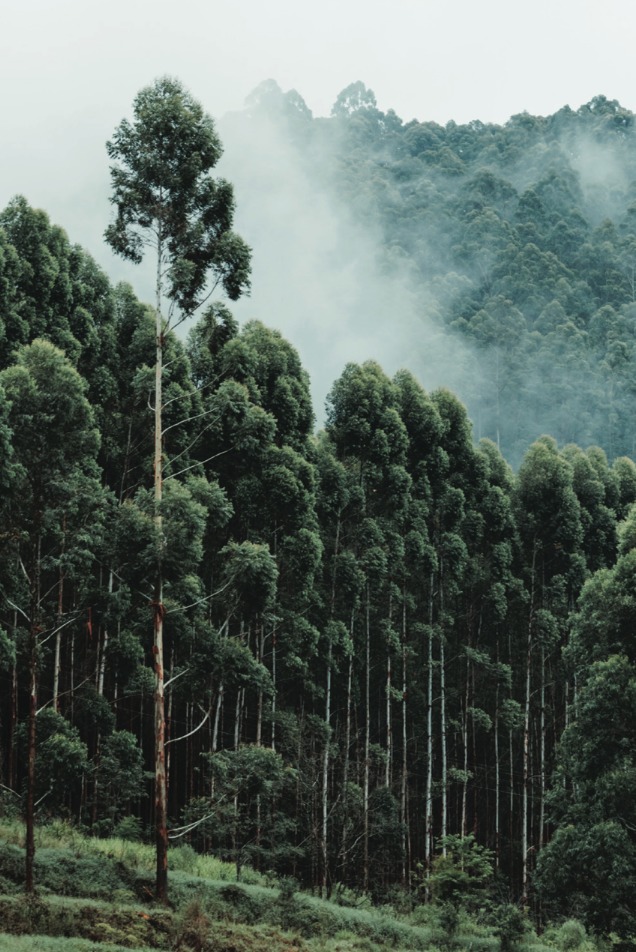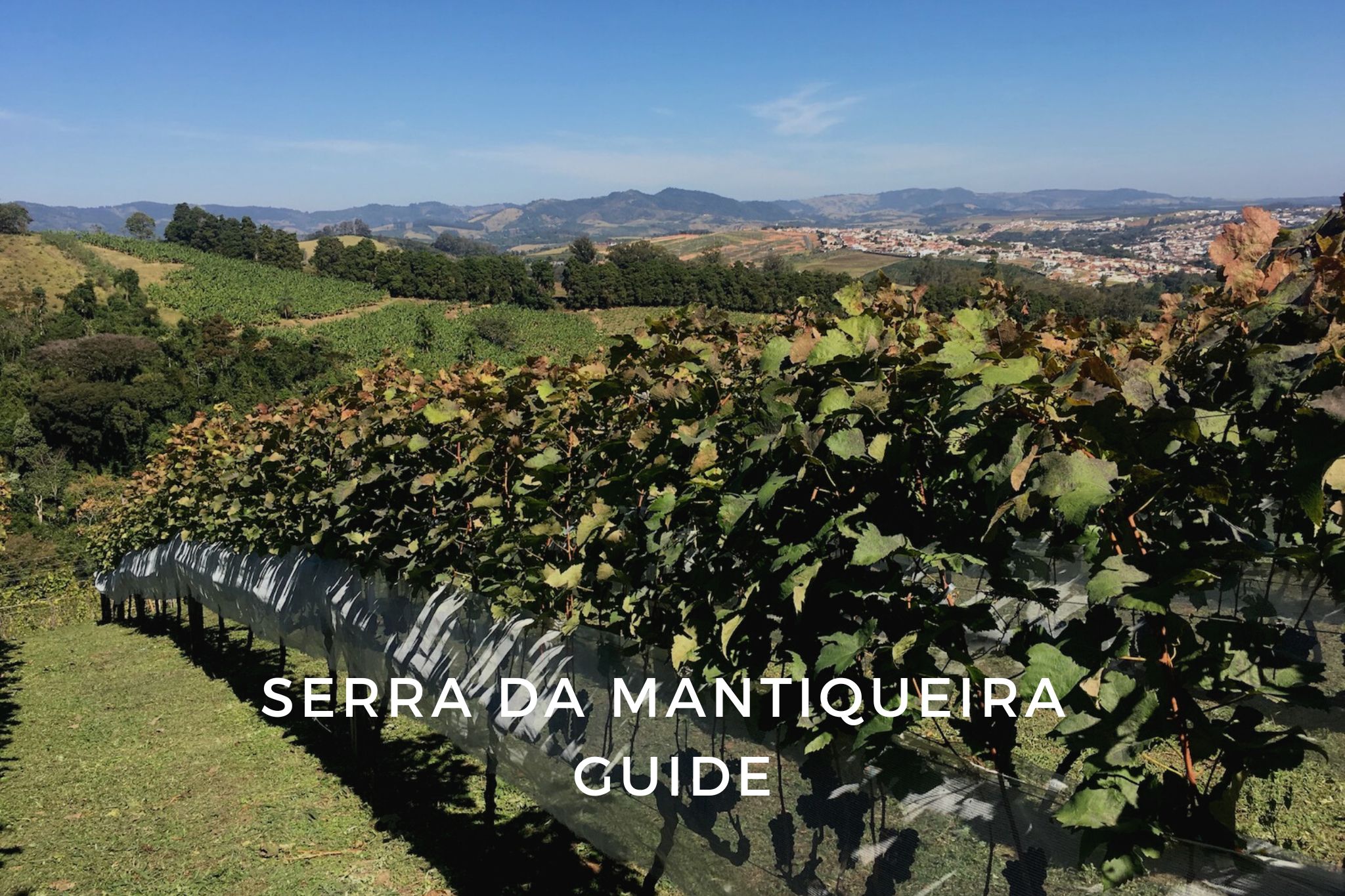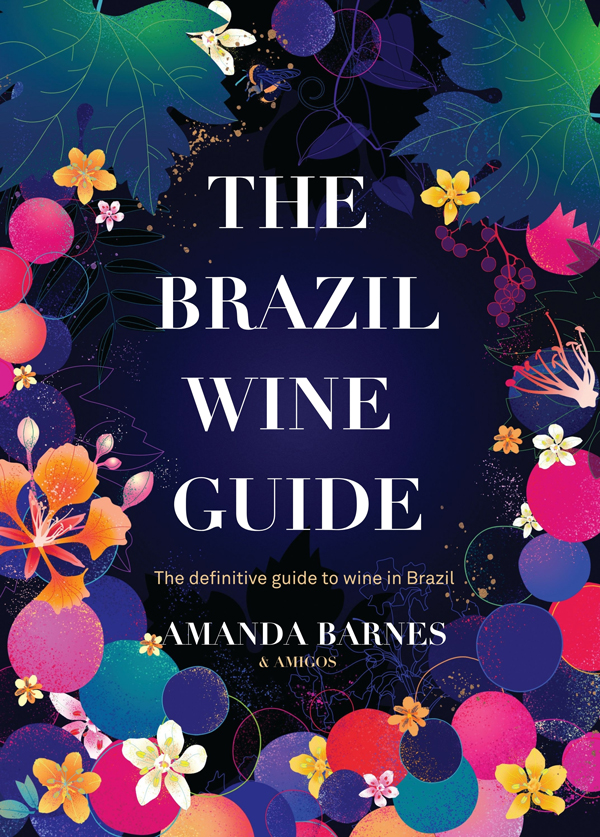Two of my ultimate vices, wine and coffee, are rarely produced in the same area but in Brazil’s Serra de Mantiqueira region, coffee plantations and vineyards can be within metres of one another. As can banana trees and grapevines for that matter. This is the new frontier for Brazilian wine — the high-altitude wine regions of Serra da Mantiqueira which spans across Minas Gerais, São Paolo and Rio de Janeiro.
The ultimate guide to the Serra da Mantiqueira wine region
The Mantiqueira mountains, which span 320 km and reach a peak at 2,798 m.a.s.l., have a special mesoclimate that makes a wide range of cultivations possible. This mountainous wine region is not only a haven for wildlife and a mecca for outdoor adventure sports but it is also fast becoming a hub for some of the more interesting wines being produced in Brazil. This is not because of its tropical climate but, in fact, because of its dry, sunny and mild winters.
Winters… Have I lost you? Why mention winters, when surely for wine production it is the hot, wet summer that matters? Up until just a decade ago, that was exactly the problem with these wine regions — the summer and ergo the time for harvesting the grapes was hot and humid, meaning that only early-ripening varieties like Riesling Itálico or those harvested early for sparkling wine could be picked in time before the summer rain set in.
But Serra da Mantiqueira has become renowned today for some of the most exciting red wines in Brazil. This is thanks to the development of the innovative winter harvest technique has been a game-changer for the region. By switching the harvest period from summer to winter, growers are able to take advantage of the spotless blue skies, sunny days and cool nights of the winter months to make wines of character and concentration — creating a boom in quality wines and a real buzz about the potential of this region. It has rapidly changed the shape and reputation of Brazilian wine.
Syrah is undoubtedly the champion of this new wine region for now, although I’ve tasted promising winter harvest Cabernet Sauvignon, Cabernet Franc, Sauvignon Blanc and Viognier too. That said, Syrah is the ideal pairing for the rich pork dishes so typical of the Mantiqueira mountains.

Want to know more detail about
the wines & wine regions in Brazil?
Get your copy of the BRAZIL WINE GUIDE E-BOOK
& the full, award-winning hardback THE SOUTH AMERICA WINE GUIDE
Fast Facts on Serra da Mantiqueira wine region
- Sub-regions: São Bento do Sapucaí, São Carlos, Espírito Santo do Pinhal, Itobi / São José do Rio Pardo, Divinolândia, Andradas, Caldas
- Altitude of vineyards: 700 to 1,600 m.a.s.l.
- Soil: A mixture of terra rossa, granite, sand and clay, of volcanic origin
- Notable producers: Casa Verrone (SP), Guaspari (SP), Ferreira (SP), Villa Santa Maria (SP), Villa Mosconi (MG), Casa Geraldo (MG), Vinhos Maria Maria (MG), Terra Nossa (SP)
Visiting Serra da Mantiqueira wine region

The mountain range spans three states, including a small part of Rio de Janeiro, although almost 60% of the range is in Minas Gerais and around 30% is in São Paulo, so you are best to base yourself around the border between the cities of São José Do Rio Pardo, Andradas and São Bento do Sapucaí, where the majority of the Serra’s vineyards are. It takes about five hours to drive between São José and São Bento, so it is worth taking a couple of days to enjoy the wineries, nature hikes and views at a more relaxed pace.
How to get around
Hiring a car and driving yourself around the Serra da Mantiqueira is by far the best way to get around. The roads aren’t busy and the setting is beautiful, with plenty of interesting viewpoints that you’ll want to stop off at. São Paulo (GRU) airport is the closest major international airport, and is a three-hour drive from Andradas.
Where to eat & drink
You aren’t going to eat badly in Minas Gerais; it’s known as Brazil’s foodie state for good reason and many of the low key restaurants offer hearty mountain cuisine. Make sure you try the renowned local cheese, simply referred to as queijo Minas (Minas cheese), as well as local dishes of farofa de andu (a cassava and bean dish), carne de sol (salted beef) with cassava chips, and bring plenty of pão de queijo (cheese breads) to snack on while on the road.
Where to stay
There are plenty of small pousadas in and around the Serra da Mantiqueira mountains, but if you want a real wine-themed stay, opt for the small wine B&B at Entre Vilas, where you can also enjoy the slow food restaurant that overlooks the vineyards.
Wines to try from Serra da Mantequeira
CASA VERRONE, Gran Speciale
Itobi/São José Do Rio Pardo / $$ / Drinking window <10 years
While I’m a big fan of Casa Verrone’s winter harvest Syrah, I’ve picked this Cabernet Sauvignon-Cabernet Franc blend for my Terroir Selection because it is one of the better Bordeaux blends I’ve tried in Brazil so far. It has deep peppery spice, dark forest fruit and meaty aromas. Complex, structured and yet refreshing.
GUASPARI, Vista do Bosque Viognier
Espírito Santo do Pinhal / $$ / Drinking window <5 years
This is easily one of the better Viognier wines I’ve tasted in South America, and it comes from Guaspari’s 1,180 m.a.s.l. vineyard, which is the Serra’s highest winter harvest vineyard. Fermented and aged in barrel, it has the richness and fatness of Viognier, with creamy complexity and mineral accents. A foodie’s wine.
VILLA MOSCONI, Riesling
Andradas / $ / Drinking window <5 years
Riesling Itálico is much simpler in expression than Riesling, but can be just as enjoyable, as this top- value wine from Villa Mosconi proves. Lightly scented with aromas of lemon sherbet, green apple and white blossom, it’s a delicate and crisp wine, and just 11.5% abv.
VINHOS MARIA MARIA, Sauvignon Blanc Elis
Campos Gerais / $$ / Drinking window <5 years
In the heart of coffee country, the Nogueira family are making promising winter harvest wines, including this grassy Sauvignon Blanc. With fresh aromas of gooseberries, pea shoots and fresh herbs, this is a sprightly and mouth-watering wine, ideal with fried local fish.
CASA VERRONE, Brut Nature NV
Divinolândia / $ / Drinking window <8 years
From high-altitude Divinolândia, at 1,300 m.a.s.l., this traditional method sparkling wine with five years on the lees offers superb value at under US$20. A nutty, creamy sparkling wine with appealing honey and croissant aromas. The Chardonnay-Pinot Noir grapes for this wine are harvested just before Christmas.
CASA GERALDO, Family Reserve
Andradas / $$ / Drinking window <10 years
One of the stalwarts of Andradas, Casa Geraldo is one of Minas’ most prolific producers and this Cabernet Sauvignon is their top wine. It is easy to see why: refined berry fruit, smooth tannins following a long ageing period in barrel and bottle, and great typicity. Long, lingering and one for steak with farofa.
TERRA NOSSA, Syrah Terroir
Santo Antônio do Jardim / $$ / Drinking window <8 years
Cristián Sepúlveda is probably the world’s most experienced winter harvest winemaker, and Terra Nossa is his own boutique project, making winter wines, including this deep, brooding Syrah. With lingering notes of forest floor, truffles, charcuterie and blackberries, and a smooth, peppery finish, it’s a savoury wine that would go well with warming winter dishes.
ENTRE VILAS, Cabernet Franc Nouveau
São Bento do Sapucaí / $$ / Drinking window <4 years
Although he serves slow food at the winery restaurant, Rodrigo sells out of his wines pretty darn fast — which is why he started making a Beaujolais Nouveau-style Cabernet Franc! The result is fabulously fun: fresh with crunchy red fruit and loads of peppery spice. Perfect to enjoy chilled on the breezy terrace overlooking the umbrella-covered vines and araucaria forests.
CARAVALHO BRANCO, Nature NV
Caldas / $$ / Drinking window <6 years
Murillo might be best known as the engineer who developed the winter harvesting technique, but this sparkling summer harvest Chardonnay is oh-so- tempting. With two years on the lees, it has developed a delicious nutty and savoury style with a creamy but dry finish.
GUASPARI, Vale da Pedra Tinto
Espírito Santo do Pinhal / $$ / Drinking window <10 years
Guaspari burst onto the scene with its excellent Vista da Serra Syrah, but my pick is this much more affordable blend of winter harvest Syrah from a selection of different blocks. Layered aromas of graphite, violets and dark fruit, with a spicy, gravelly and fresh finish — perfect evidence of why winter harvest Syrah from the Serra can be so exciting.


